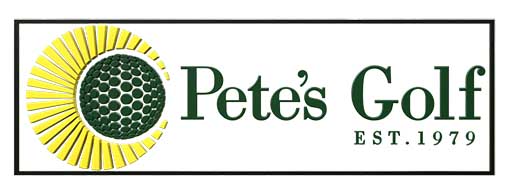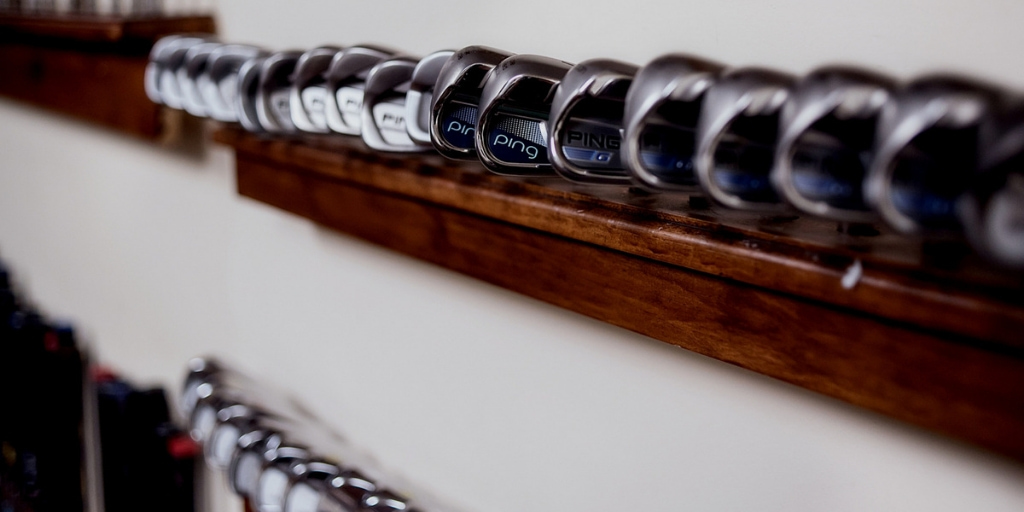Many golfers are interested to know how exactly an iron fitting works. In this article, we want to share some of the critical things we are looking to accomplish at Pete’s Golf. Check out this video for details, and we’ll summarize some key points below:
Interview process
Our first step is to discuss a player’s goal and what they are looking to achieve with a new set of irons. We will take their current equipment and test it to establish baseline numbers to compare against. Our fitter will look for any tendencies they notice in their swing and with the launch monitor data, and start coming up with a hypothesis of different variations of clubs we can test.
Our primary goal with irons is consistency. It may not be the club that goes the farthest; we want irons that will produce the most consistent ball flight. With all fittings, we are looking to see if we can improve upon current equipment and if we can’t then we won’t recommend an upgrade.
Choosing The Right Clubhead
The right clubhead is arguably our most important part of the iron fitting. After analyzing our client’s swing, we will try to match a clubhead that gives them an optimal combination of a center of gravity, forgiveness, lie angle, and several other factors.
With modern technology, we have a lot of options. We don’t love to use the term “game improvement irons” as much anymore because there are so many irons that have a nice mixture of forgiveness, stability, feel, and looks.
Using our Foresight Sports GCQuad launch monitor we can quickly see which clubheads might perform optimally for a golfer’s tendencies. By examing metrics like distance, dispersion, launch angle, and dynamic lie angle – we can start to hone in on the right mixture.
Shafts
Once we settle on a clubhead, our next goal is to match the right shaft. If the head of the club is the engine of the car, think of the shaft as the transmission. It’s still vitally important to performance.
There are three properties when it comes to shafts:
- Profile – how does the shaft bend?
- Flex – are we looking for a shaft that is more flexible or stiffer overall?
- Weight – how can we match the overall weight of the shaft to a golfer’s swing?
Pete’s Golf has an extensive inventory of shafts where we can create any combination necessary. When we can match up the right shaft properties along with the clubhead, we can start seeing some noticeable differences in ball flight properties.
Set Makeup
Some golfers are under the impression that all iron sets are going to be 3-PW. In most cases, we see sets being built with a different mixture.
Our goal is to play to your strengths, and sometimes that means swapping out longer irons with hybrids or fairway woods. Additionally, we might add a gap wedge in the mix. It all depends on what performs optimally for you and the kind of data we are seeing from the launch monitor.
Why Is Lie Angle So Important
One of the most critical elements of an iron fitting is getting the right lie angle. As you know, golf is not played on even surfaces. We want to make sure that the club is interacting with the turf optimally – a lot of that has to do with lie angle.
Since there are no standards in the golf industry for lie angle, this is something we are always measuring, and our primary goal is to get the clubhead level with the ground at impact. If the club is too upright, or flat, it can influence the direction of your golf ball (especially as loft increases).
Long story short, it’s a critical element to your iron set, and we make sure that all of your lie angles will be appropriately adjusted to give you the best chance of hitting your target on the course.
Finding the Right Grip
Our primary goal for the grip is the club resting comfortably in your hands. We might adjust the thickness of the grip based on your hand size, but no rule of thumb fits all.
In the iron fitting, we’ll experiment with different grips to see if there are any noticeable changes. When it comes to texture, you’ll have plenty of options, and we usually go with your personal preference.
Testing A Club
In some instances, it might make sense to build a test club for a golfer. They can take it out on the range, or even the course to see how it performs versus their current equipment.
How Long Do Irons Last?
A lot of time customers will ask us how long they can expect a new iron set to last. As with most things in golf, it depends.
Durability will be affected by the manufacturing process. For example, cast irons will likely last longer than a forged iron. When the faces of iron wear out you will start to lose consistency – some shots might start going too long or short.
Typically, we see a golfer’s swing changes or technology improvement will happen before the club wears out. Overall, a good rule of thumb is somewhere between 5-10 years of expected use out of a new iron set.
Come Work With Us
We hope our video and summary has taught you more about what you can expect from an iron fitting. With more than 40 years of experience in club fitting, we can properly evaluate your current equipment and find out if there is something better out there for you.
To book your next iron fitting in our Long Island or New York City locations, please visit this page.

